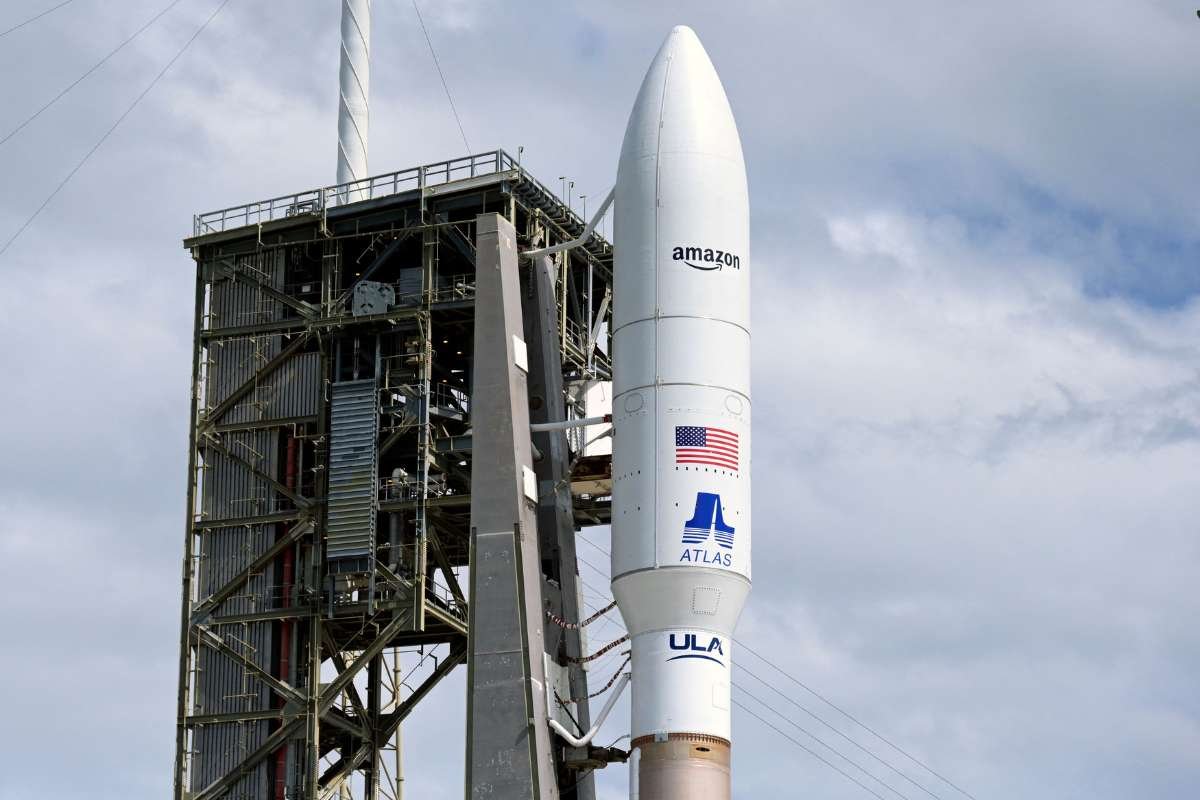Stormy Skies Delay Launch of Kuiper 1 Mission
United Launch Alliance (ULA) was forced to scrub the scheduled launch of Amazon’s Kuiper 1 satellite mission due to unfavorable weather conditions off the coast of Florida. The mission, which would have seen ULA’s powerful Atlas 5 rocket lift off from Cape Canaveral carrying 27 Kuiper satellites, was delayed because of off-shore thunderstorms and strong winds. This launch marks the first full-scale deployment of Amazon’s satellite internet constellation, Project Kuiper, aimed at competing with SpaceX’s Starlink and Eutelsat’s OneWeb.
The 45th Weather Squadron had initially predicted a 55% chance of favorable conditions for the launch. However, increasing concerns over cumulus cloud development, strong liftoff winds, and isolated showers led to an 80% probability of weather violations during the launch window. Meteorologists indicated that a cold front and fast-moving showers would persist throughout the day, ultimately making the launch attempt unviable. A new launch date is currently under review.
ULA’s Launch Timeline and Amazon’s Deployment Plans
The Kuiper 1 Satellite mission—referred to as KA-01 by Amazon—marks the beginning of Amazon’s ambitious plan to deploy over 3,200 satellites in low Earth orbit. ULA is utilizing its most powerful Atlas 5 configuration (551), equipped with five Northrop Grumman solid rocket boosters. Amazon has already secured eight Atlas 5 rockets for these initial Kuiper launches.
In a recent media briefing, ULA CEO Tory Bruno said it is unlikely that all eight launches will occur within 2025, with the remainder likely spilling over into 2026. ULA is also preparing to transition some Kuiper missions to its next-generation Vulcan rocket, with a potential launch of 45 satellites scheduled for late summer. Additional Vulcan launches are lined up under the U.S. Space Force’s National Security Space Launch Phase 2 contract, including missions USSF-106 and USSF-87.
Bruno estimated ULA could conduct 11 to 13 missions by year-end, split between government and commercial clients like Amazon. These launches are expected to advance Project Kuiper toward its goal of reaching a critical satellite mass required to initiate service and generate revenue.
Project Kuiper’s Vision and Government Collaborations
Project Kuiper aims to deploy a constellation of 3,236 satellites across 98 orbital planes at altitudes ranging from 590 to 630 kilometers. Amazon has committed to beginning customer service once the first 578 satellites are operational, in accordance with Federal Communications Commission (FCC) regulations.
Amazon is taking a multifaceted approach to building Project Kuiper, developing the entire system in-house—from satellites and antennas to solar arrays and inter-satellite links. Rajeev Badyal, VP of Technology for Kuiper, emphasized the team’s dedication despite the complexity of the mission. Amazon previously launched two prototype satellites in October 2023 to test the system’s performance.
Beyond consumer and commercial services, Amazon is also targeting government clients. It has established Kuiper Government Solutions (KGS) LLC, a separate entity focused on secure and specialized communications for defense and public sector needs. KGS recently partnered with L3Harris Technologies to provide integrated solutions, combining Kuiper 1 satellite network with L3Harris’s tactical communication technologies. This collaboration is intended to deliver robust, interoperable systems for military, emergency response, and other government operations.
As Project Kuiper gains momentum, it stands poised to be a major player in the rapidly growing satellite internet sector.










